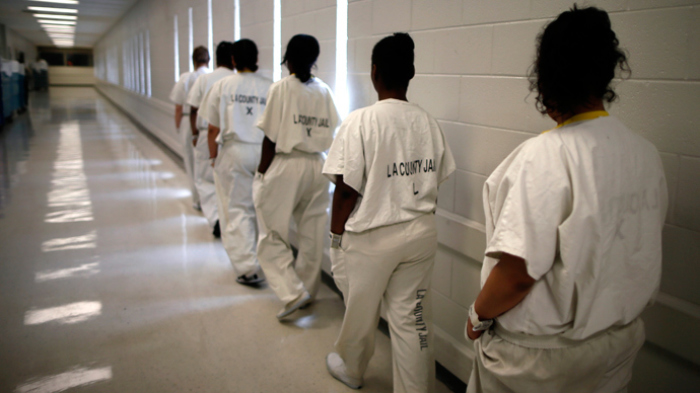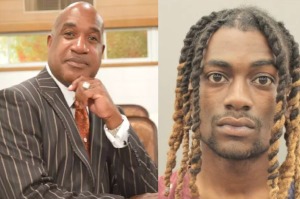Biden to allow trans-identified men in women's prisons, reversing Trump-era ban 'except in rare cases'

The United States Department of Justice has unveiled new guidance allowing male inmates at federal prisons to be housed with female prisoners.
The DOJ’s Federal Bureau of Prisons outlined changes to the "Transgender Offender Manual" in a 14-page document released Jan. 13. The stated purpose of the update is to “ensure the Bureau of Prisons (Bureau) properly identifies, tracks, and provides services to the transgender population.”
Specifically, the changes remove language inserted into the "Transgender Offender Manual" by the Trump administration. The Trump administration required the Transgender Executive Council to “use biological sex as the initial determination for designation” of trans-identified inmates. According to the Trump administration’s approach, implemented in 2018, “the designation to a facility of the inmate’s identified gender would be appropriate only in rare cases.”
The aforementioned language has since been removed from the "Transgender Offender Manual." Additional language removed from the manual includes a statement declaring that “training materials and current information on the management of transgender inmates” will “include information concerning best practices for maintaining the safety of transgender inmates, while also ensuring security and good order in Federal prisons and the safety of staff, inmates, and the public.”
In addition to removing the language added to the "Transgender Offender Manual" by the Trump administration, the Biden administration now requires prison personnel to address trans-identified inmates using their preferred pronouns. Under the Trump administration, prison staff had the option to decide whether to address trans-identified inmates using pronouns that matched their chosen gender identity. Now, prison officials will have to either refer to trans-identified prisoners by their last name or “the pronouns associated with the inmate’s identified gender.”
“Deliberately and repeatedly mis-gendering an inmate is not permitted,” the guidance states.
In the absence of the Trump administration guidance assigning biological sex as the primary determining factor for the placement of a trans-identified prisoner, the designation of such inmates to prisons that either match their biological sex or chosen gender identity will be done on a “case-by-case basis.” The manual stresses that “a transgender or intersex inmate’s own views with respect to his/her own safety must be given serious consideration.”
The document also contains an entirely new section outlining the process trans-identified inmates must go through when seeking so-called "trans-affirming surgeries." Trans-identified inmates now have the option to submit a request for “surgical intervention” to their prison’s warden.
Additionally, the document defines gender as “a construct used to classify a person as male, female, both, or neither,” adding: “Gender encompasses aspects of social identity, psychological identity, and human behavior.” The definition makes no mention of the role human biology plays in determining gender. The definition, one of several included in the "Transgender Offender Manual," remains unchanged from the Trump administration.
Female inmates in California have expressed opposition to a recently enacted law that allows the placement of male inmates who identify as female in women’s prisons, citing concerns for the safety of the female inmates in light of the biological differences between men and women.
One female prisoner recalled an interaction between a young female prisoner and a trans-identified man in the prison yard. “He spoke of ‘getting it on’ with the women and he had no intentions of getting rid of his penis,” she reported.
“These guys have been overheard saying to one another, ‘Stick to the plan.’ What exactly is the ‘plan?’” she asked. “We are not certain. I will not be surprised [when] the first female gets pregnant.”
Another female inmate, who has suffered “sexual abuse, gang rape, rape by co-defendant, [and] domestic violence,” wrote about the “horror of having to wait for a possible sex offender with a penis to be housed in a cell with me.” She also feared “being the only one left alone in the cell with someone who [has] 25 percent more muscle than me.”
The Women’s Liberation Front, a feminist group, publicly shared letters from these women expressing their concerns and fears as part of its effort to preserve single-sex prisons.
Just before the Bureau of Prisons unveiled the document containing updated guidance on how to deal with trans-identified inmates, Sen. Tom Cotton, R-Ark., introduced the Preventing Violence Against Female Inmates Act. His legislation would “forbid the Bureau of Prisons from using asserted ‘gender identity’ to house inmates of one sex with inmates of the opposite sex” and would withhold federal funding from state prisons that house prisoners based on their stated gender identity as opposed to their biological sex.
“President Biden’s plan to house male and female prisoners together will put women in danger,” Cotton said in a statement. “Documented cases prove that placing men — including ones who ‘identify’ as female — in women’s prisons puts female inmates at increased risk of sexual assault. My bill will stop the president’s ill-conceived plan and keep men and women separated in federal prison.”
Ryan Foley is a reporter for The Christian Post. He can be reached at: ryan.foley@christianpost.com




























